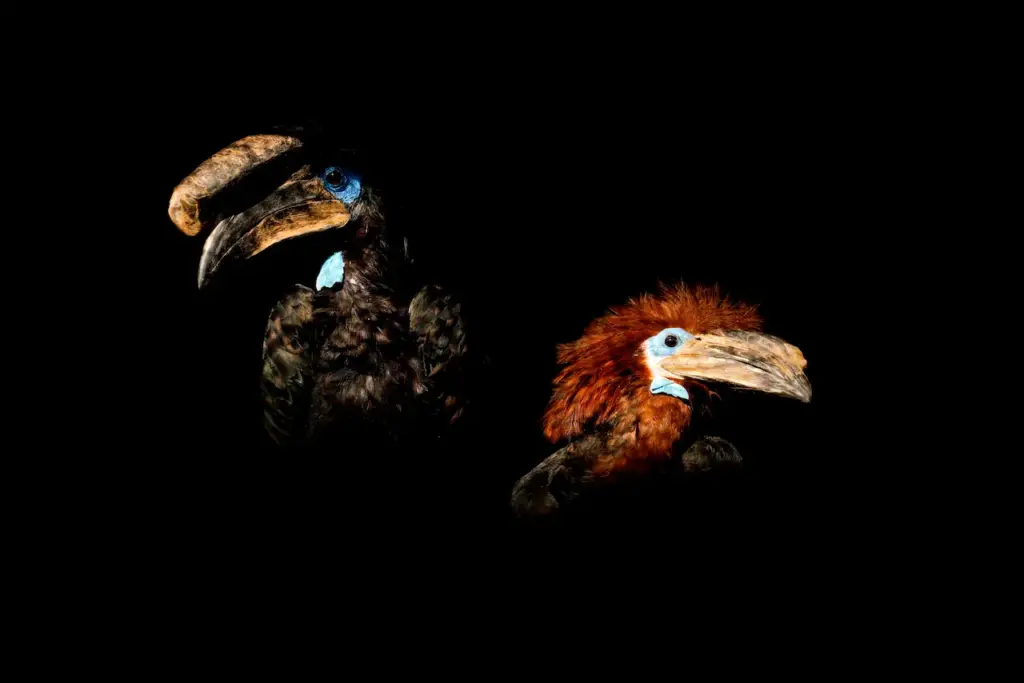Yellow-casqued Hornbills
The Yellow-casqued Hornbills (Ceratogymna elata) is found in the primeval rain forest of coastal regions of West Africa, for example in Côte d’Ivoire
They live in small family groups containing at least one adult male and female, with one or two immature birds, though they sometimes gather in larger flocks to exploit a major food supply such as an ant or termite nest.
They live mainly in the forest canopy, feeding on the ground only rarely.

Hornbill Information … Hornbill Index of Species … Hornbill Species Photo Gallery
Description
Yellow-casqued Hornbills are one of the largest birds in the forest, with adults weighing up to 2 kg.
Biologist Olivia Judson has remarked that “Yellow-casqued hornbills remind me of aging rock stars: their head feathers have that kind of wild look.”
The birds are occasionally preyed upon by Crowned Hawk-eagles, and they respond to the presence of an eagle (sometimes indicated by its characteristic shriek) by mobbing, i.e. approaching it and emitting calls. Since the eagles depend on surprise to make a catch, this frequently causes them to leave the area.
Recent research (Rainey et al., 2004) has shown that the birds respond in the same way to the alarm calls that Diana Monkeys, which live in the same areas, emit if they notice an eagle, and furthermore that they are able to distinguish the calls made by the monkeys to the presence of eagles from those they make in the presence of leopards, which prey on the monkeys but not on the hornbills.
References
- BirdLife International (2004). Ceratogymna elata. 2006. IUCN Red List of Threatened Species. International Union for Conservation of Nature (IUCN) 2006. Retrieved on 11 May 2006. Database entry includes a brief justification of why this species is near threatened

